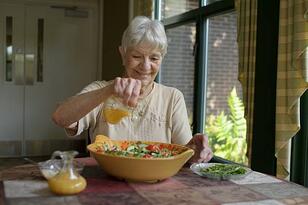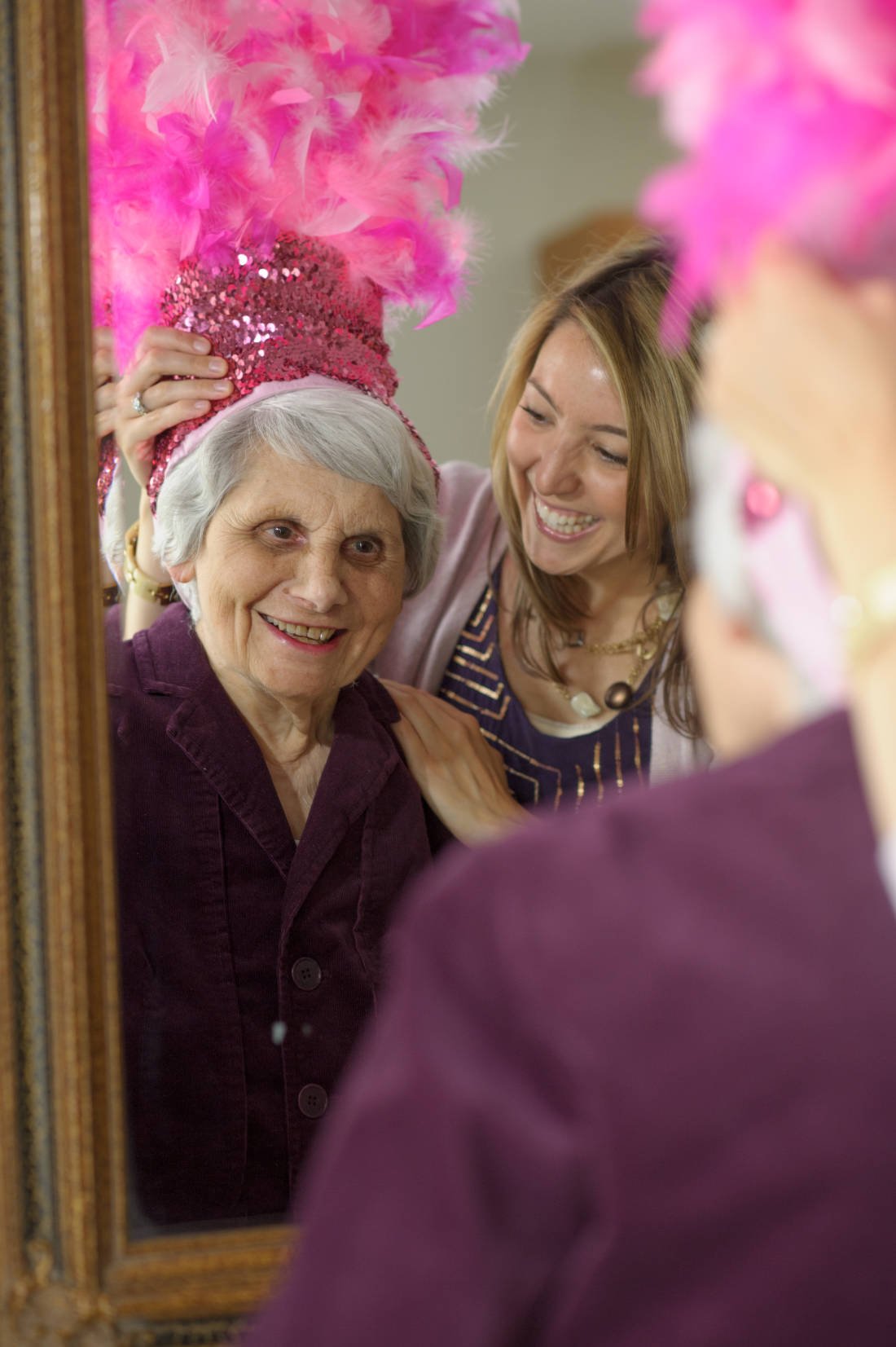 Seniors are particularly vulnerable to malnutrition; in fact, many diseases common among older adults are a direct result of dietary insufficiencies. Making sure that your aging loved has access to balanced meals can be a real challenge for caregivers, especially if mom or dad is living alone.
Seniors are particularly vulnerable to malnutrition; in fact, many diseases common among older adults are a direct result of dietary insufficiencies. Making sure that your aging loved has access to balanced meals can be a real challenge for caregivers, especially if mom or dad is living alone.
These quick and simple suggestions will have your loved one on the path to optimal nutrition, health and well-being, and hopefully, make life a little easier for you too, the caregiver.
The Importance of Eating Well
Americans now live longer than ever. Eating well adds vitality to these extra years while reducing the risk of disease. Proteins, carbohydrates, fats, vitamins, minerals and water are critical nutrients needed by the body. And while our bodies need less energy as we get older, we still need these same nutrients to stay healthy.
This can be a challenge for older people due to a number of factors. Managing chronic conditions such as high blood pressure, diabetes, and heart disease can make meal planning difficult, especially for a loved one who is resistant to healthy choices. Grocery shopping and meal planning and preparation take time and energy, and for many older adults, this can be a tiring and frustrating process. Decreased appetite, loss of taste, and difficulty chewing can add further complications.
Stock Up!
Make sure your loved one has access to nutritious meals by stocking up the pantry and fridge with healthy foods, such as cereals, soups, fruits, fresh or frozen vegetables, whole grain rice, pastas and breads (for added fiber), canned beans, yogurt, 100% juice, and jarred pasta sauce. Your loved ones will make better choices when these nutrient-rich foods are within reach. Look for low sodium and high fiber options that can help manage chronic health conditions.
Prep Work
The act of preparing a meal can be exhausting, but proper prep work minimizes the effort. Begin by creating a comfortable and safe cooking environment. Keep heavy appliances on the countertop while pots, pans, cooking utensils and equipment should be stored in accessible spots. Kitchen items that are used the most should be kept within easy reach to prevent unpredictable falls or muscle sprains that can come from straining to reach something that is stored too high or too low.
Seek out prepared ingredients, which have already been chopped, washed and even cooked -- from stir-fry vegetables to salad greens to sliced chicken. These items can be combined for a variety of quick simple meals. Be sure to choose low- and reduced-sodium items.
While stocking fresh fruits and vegetables can be a struggle, frozen and canned items are not only easier, but some also provide equivalent nutrition. When cooking, make more than one serving of sides, such as rice and pasta, which can be saved for the next day and combined with canned beans or cooked veggies for a simple one-dish dinner. Add leftover vegetables and meats to low sodium chicken broth or a heart-healthy soup for a heartier meal.
Encourage Eating
Many older adults struggle with chewing because of gum disease, dentures and medical issues. Baked or mashed sweet potatoes, cooked pasta, soft fruits, canned beans, tofu, cooked vegetables, hummus, yogurt, pudding, low-fat cheese, chopped lean meat, fish and scrambled eggs are all healthy choices that are easy to chew. Blanched vegetables are easier to digest: boil them for one minute, drain, and quickly plunge in ice water to tenderize them.
It’s a little-known fact that taste and smell dull as we age; additionally, some medications and medical treatments can also cause food to lose its appeal. Boost flavor by using spices and herbs, incorporating vibrant colors and varying temperature and textures.
If your loved one is struggling to maintain a healthy weight, have high-calorie foods available for snacking –try crackers with peanut butter, dried fruit, yogurt (not low-fat), nuts, avocados, or a calorie rich drink, such as Ensure . Bypass coffee, tea and diet soft drinks and instead stock up on milk, juice and yogurt shakes.
And don’t forget breakfast! This first meal of the day doesn’t just deliver crucial calories; it also provides energy to power through the day.
Key Takeaways
-
Improve your aging loved one’s health and quality of life through adequate nutrition.
-
Stock the pantry with healthy foods to ensure best choices.
-
Promote a safe, comfortable cooking environment through planning and prep work.
- As a caregiver, try to remain aware of your loved one’s eating habits, be sensitive to sensory changes, and encourage healthy options.





 Seniors are particularly vulnerable to malnutrition; in fact, many diseases common among older adults are a direct result of dietary insufficiencies. Making sure that your aging loved
Seniors are particularly vulnerable to malnutrition; in fact, many diseases common among older adults are a direct result of dietary insufficiencies. Making sure that your aging loved 